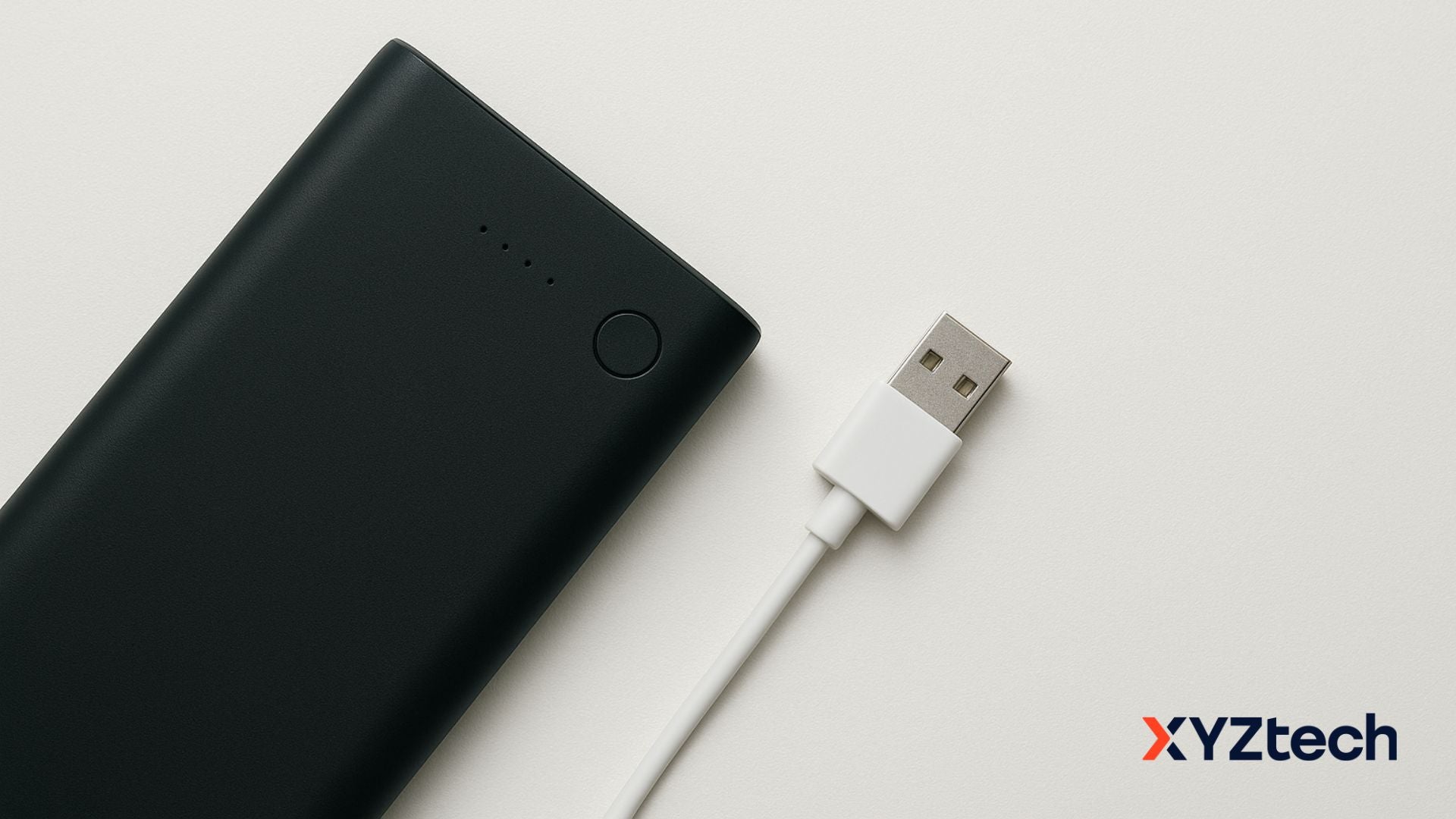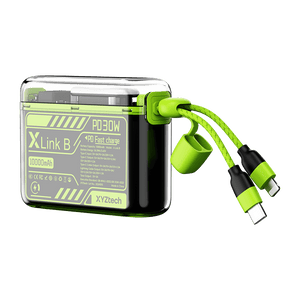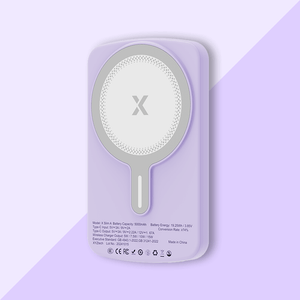Short Circuit Protection Explained: What It Is & How It Works

Power banks are lifesavers when your phone is about to die, but they’re not just about capacity and fast charging. One feature that doesn’t always get much attention, but is absolutely critical, is short circuit protection. Without it, both your device and the power bank could be at risk.
Let’s break down why battery short circuit protection matters, what other safety features you should look for, and how you can make sure your power bank is truly safe to use.
In this blog:
- What Is Short Circuit Protection?
- Do All Power Banks Have Battery Short Circuit Protection?
- Why Short Circuit Protection Matters for Your Devices
- Other Key Safety Features to Look For
- How to Know If Your Power Bank Has These Protections
- Practical Tips When Choosing a Safe Power Bank
- Tips for Safe Power Bank Use
- Frequently Asked Questions
Let’s get started!
What Is Short Circuit Protection?
A short circuit happens when electricity takes an unintended shortcut, usually because of damaged wiring, faulty ports, or a defective cable. This can lead to:
- Overheating
- Sparks or smoke
- Permanent damage to your power bank and device
- In rare cases, fire or explosion
A battery short circuit protection is a built-in safety mechanism that instantly cuts off power when a short is detected. Think of it like an automatic switch that shuts things down before they can go bad.
Do All Power Banks Have Battery Short Circuit Protection?
Not all of them do. Most reputable brands include it as part of their built-in safety systems, but cheaper or unbranded models may skip it to cut costs. That’s why you might see a big difference in price between a no-name power bank and one from a trusted manufacturer.
Some power banks only advertise capacity and charging speed, but safety protections like short circuit protection and overcharge protection are just as important. Without them, your device could be at risk if something goes wrong during charging.
Why Short Circuit Protection Matters for Your Devices
The point of having short circuit protection in a power bank is simple: it protects both the power bank and your phone. Here’s what it does for you:
- Prevents damage to your phone: A short circuit could fry your phone’s charging port or battery.
- Protects the power bank itself: Without protection, the power bank could overheat, swell, or stop working entirely.
- Adds peace of mind when traveling: Since many people use power banks on the go, built-in safety features reduce the risk of accidents in your bag or pocket.
Real-World Scenarios Where It Matters
Here’s where battery short circuit protection saves the day:
- You accidentally use a damaged charging cable with exposed wires.
- Your phone’s charging port has dirt or moisture, causing a short.
- A faulty USB accessory pulls more current than it should.
In each of these cases, a power bank with short circuit protection will cut off power instantly, preventing sparks, overheating, or worse.
Other Key Safety Features to Look For
Battery short circuit protection is just one part of the puzzle. A reliable power bank usually has multiple layers of protection, such as:
- Overcharge protection: Stops charging once your device’s battery is full.
- Over-discharge protection: Prevents the power bank from draining too far, which shortens its lifespan.
- Overcurrent protection: Blocks excessive current that could fry your device’s circuits.
- Overvoltage protection: Guards against unstable power spikes.
- Temperature control: Prevents overheating during heavy use.
When manufacturers describe a “multi-layer” safety system, they generally mean a combination of the above, including short circuit protection.
How to Know If Your Power Bank Has These Protections
Since you can’t see these safety features at work, here’s how to check:
- Check the specs sheet: Reputable brands usually list protections clearly (e.g., “short circuit, overcurrent, overvoltage protection”).
- Look for certifications: Labels like CE, FCC, UL, or RoHS mean the device has passed safety tests.
- Read user reviews: People often mention if the power bank gets unusually hot or has sudden failures.
- Stick to known brands: Established names almost always include these features.
- Avoid suspiciously cheap options: If a 20,000mAh power bank is priced far below the market average, it’s likely cutting corners.
Practical Tips When Choosing a Safe Power Bank
If you’re shopping for a new power bank, keep these points in mind:
- Don’t only look at capacity: A huge mAh rating is nice, but safety features matter more in the long run.
- Buy from reputable sellers: Avoid suspiciously cheap units with no listed safety specs.
- Look for multi-protection systems: Some brands call this “smart safety” or “multi-layer protection,” which usually includes battery short circuit protection.
- Inspect your cables too: A damaged charging cable can cause short circuits, so replace frayed or bent ones.
Tips for Safe Power Bank Use
Even with protections built in, safe habits go a long way:
- Use original or certified charging cables to avoid faulty wiring.
- Keep charging ports clean and dry.
- Don’t use a swollen, cracked, or damaged power bank.
- Avoid leaving it in extreme heat (like inside a parked car).
These steps help extend your power bank’s lifespan while keeping your devices safe.
Frequently Asked Questions
Can a short circuit cause a battery to drain?
Yes, a short circuit can quickly drain or damage a battery. Without protection, electricity can take unintended paths and cause energy loss. That’s why short circuit protection in power banks is so important.
What is short circuit protection on a lithium-ion battery?
Short circuit protection detects abnormal current and immediately disconnects the battery. This prevents overheating, permanent damage, or even fire. Many lithium batteries also include temperature monitoring for added safety.
How to protect batteries from short circuits?
Always use power banks that have built-in short circuit protection. Avoid damaged cables and keep charging ports clean and dry. These simple precautions help prevent accidental shorts and keep devices safe.
Wrapping Up…
When it comes to power banks, short circuit protection isn’t just a technical extra, it’s an essential safety feature. While not all models include it, the good ones do, and that’s what makes them worth the purchase. Always check the product details, certifications, and reviews to make sure the power bank you’re carrying around has proper safeguards.
Whether you’re at home, at work, or traveling, knowing your power bank has battery short circuit protection gives you peace of mind and helps keep your devices safe.
Have you noticed any habits that help keep your phone’s battery healthy? Share your observations or experiences; it would be great to hear what works for you.
Related Articles
CE, FCC, ROHS & Other Certifications: What Do They Mean?







